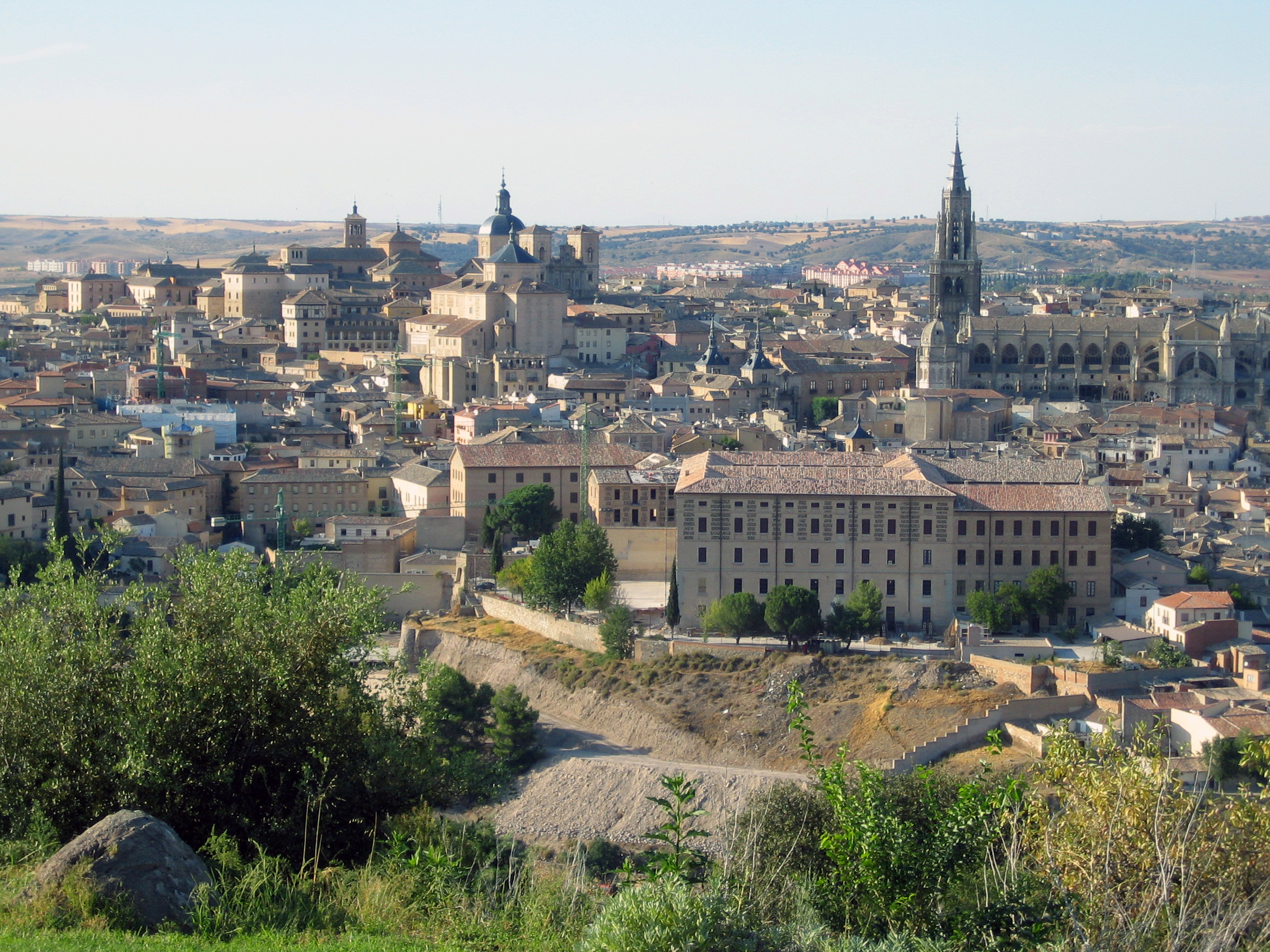 Tourists aside, Toledo is still a beautiful city. The regal signs of this ancient seat of Spain still tower above the city. Like Venice, with it’s murano glass and leather mask shops attacking you at every corner, Toledo streets are an endless display of boutiques selling hammered inlaid gold; plates, coasters, jewelry, swords. The list goes on. Some of them even have the craftsmen themselves on display to show you that the curios for sale are indeed authentic, although if the shop keeper notices you might be uncomfortable with the high price of the piece, they’ll always take you to the case of machine made gold inlay. Yes, it looks the same and it’s more than half the price.
Tourists aside, Toledo is still a beautiful city. The regal signs of this ancient seat of Spain still tower above the city. Like Venice, with it’s murano glass and leather mask shops attacking you at every corner, Toledo streets are an endless display of boutiques selling hammered inlaid gold; plates, coasters, jewelry, swords. The list goes on. Some of them even have the craftsmen themselves on display to show you that the curios for sale are indeed authentic, although if the shop keeper notices you might be uncomfortable with the high price of the piece, they’ll always take you to the case of machine made gold inlay. Yes, it looks the same and it’s more than half the price.
Aside from the usual meandering through the narrow streets of this 15th century city, the main sites of Toldeo are mostly religious. There is a very large cathedral for the catholics and a couple small synagogues for the jews. Not much left in the name of Islam, even though the Moors occupied and ruled most of Spain for close to 800 years. The Moorish culture is present in almost everything from architecture to music to food, but Toledo was the seat of Ferdinand and Isabella, the king and Queen who finally ran them out. By the way, this was the same Ferdinand and Isabella who gave Columbus the money to find new wealth in the new world.
The 14th century synagogues were transformed into churches during the inquisition of 1492, the same year the Moors were defeated, but Spain, haunted by it’s violent past or possible trying to get at the jewish tourists dollars, has created a lovely historical picture of Sephardic life in Spain from the 7th to the 15th century. The two small synagogues, both done in Moorish architectural style are now museums. Yes, in the days before the Christian Reconquista, the muslim and jewish communities actually embraced each other.
 Another place to search out in Toledo is the secular house of 17th century Greek painter, Doménikos Theotokópoulos, more commonly known as El Greco. He was the greatest impressionist of his time and everyone he painted had elongated bodies with the big noses.
Another place to search out in Toledo is the secular house of 17th century Greek painter, Doménikos Theotokópoulos, more commonly known as El Greco. He was the greatest impressionist of his time and everyone he painted had elongated bodies with the big noses.
The egotistical El Greco also seemed to have painted his own face into all of his allegorical paintings. Either that or maybe all the saints did look just like him. But the best reason appreciate like El Greco is because of him. The guy’s life was just as weird as his paintings.
While he was working in Rome, he announced that Michaelangelo was a hack and he could do a much better job if some of the Michealangelo panels in the Vatican were removed and given to him to recreate. The Roman response was to run him out of town. When he found a benefactor in Toldedo, he settled in and adopted the name El Greco (the Greek), a name the Spaniards gave to him because they probably couldn’t pronounce Domenikos Theotocopoulos. But even in Toledo, his work wasn’t received very well. The all thought him too weird. Although he never got many large commissions, he did manage to get enough work to enable hime to buy a really big house in the jewish quarter. He lived a really good life; big house, lavish clothes, big parties. He even hired a couple of musicians to play music while he ate every one of his meals, but all these lavish habits ended up putting hime into a greater debt.
When he died, the only possessions he owned were a few pieces of clothing and his paint brushes. That must of really pissed off his heirs.
You must be logged in to post a comment.